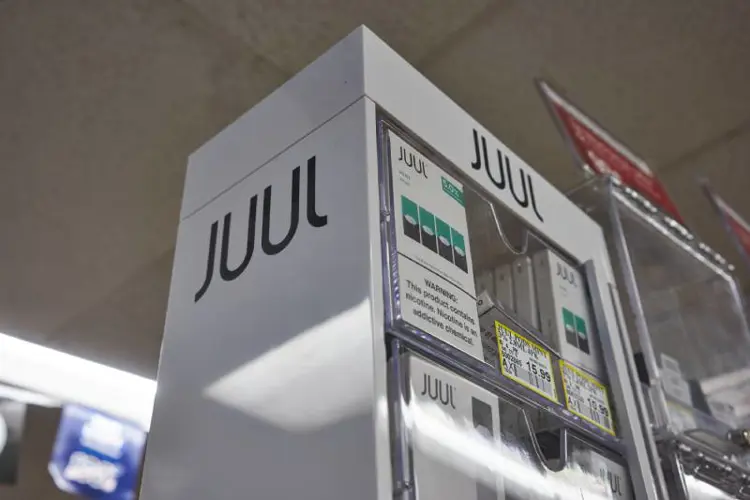Earlier this year, New York State Assembly member Linda Rosenthal—a staunch vaping opponent—introduced a bill that would add nicotine pouches to the list of nicotine products that cannot be sold in flavors other than tobacco. The bill hasn’t left committee yet, but it may signal the start of a wave of restrictive laws on what is certainly the most innocuous of all nicotine products.
Nicotine pouches contain no tobacco, and some don’t even contain tobacco-derived nicotine. They don’t emit smoke or vapor, and don’t contain any ingredient except nicotine that isn’t also found in processed foods.
There is no evidence that nicotine pouches pose any sort of risk to users. They’re simply a vehicle for delivering nicotine, the same drug contained in FDA-approved stop-smoking medications.
But tobacco control organizations have begun to take notice of nicotine pouches, and are already advocating for taxes and flavor bans. Opposition to nicotine pouches is more proof that tobacco control has abandoned its concern over the dangers of smoking, and has shifted its goal from a smoke-free to a nicotine-free society.
Are nicotine pouches the same as NRT or snus?
Nicotine pouches are consumer products consisting of a strong but porous fiber pouch that contains food-grade filler similar to gum, flavorings, and varying levels of nicotine. They are similar to Swedish portion snus, aside from containing no tobacco, and most are manufactured in Sweden. Nicotine pouches are sometimes called “modern oral products” by manufacturers, and “white pouches” by some consumers.
Except for the different mechanics of delivering nicotine to the mouth, pouches are similar in content and effect to nicotine replacement therapy (NRT) products like nicotine gum. Indeed, one Swedish brand, Zonnic, is sold as an NRT product. Some nicotine defenders want to see additional nicotine pouch NRT products.
Snus giant Swedish Match launched its ZYN nicotine pouch brand nationally in the United States in 2019, after extensive regional test marketing. Other popular American brands—many of them licensed or bought from Swedish manufacturers—include Velo (sold by RJ Reynolds/British American Tobacco), On! (Altria), and Rogue, which is made in the U.S. and owned by a group that includes cigar manufacturer Swisher. In Europe, Lyft, Skruf and Nordic Spirit are among the leading brands.
Nicotine hasn’t been shown to cause any of the major health harms often incorrectly attributed to it, including cancer and heart disease.
Like Swedish snus, nicotine pouches are placed between the upper cheek and gum, and the nicotine is absorbed through the oral mucosa. They don’t generate saliva like traditional American smokeless tobacco, and don’t require spitting.
Nicotine pouches provide an alternative for oral nicotine users who don’t enjoy the tobacco flavor of snus. Some nicotine pouch manufacturers also sell nicotine lozenges and gum. As with vapes, oral nicotine consumer products like pouches and lozenges are not marketed in the U.S. as smoking cessation tools. But, also like vaping products, they are probably used by many people to quit smoking.
If the use of snus presents almost no measurable risk to users, nicotine pouches must be even less risky. They contain even lower levels of the tobacco-specific nitrosamines that are the only identifiable risk of snus (and snus itself has very low levels of nitrosamines). The level is about the same as in nicotine gum, which also contains tobacco-derived nicotine. The flavorings used in nicotine pouches are not inhaled, as they are with e-cigarettes, but absorbed in the mouth, where they are considered generally safe by food regulators.
A recent study of nicotine pouches by British American Tobacco (BAT) scientists noted that the potentially harmful constituents of other tobacco products were absent or found in only tiny quantities (much like vaping). (BAT sells nicotine pouches, by the way.)
The “public health concerns” appear almost identical to anti-tobacco organizations’ concerns over vaping.
“Based on the present chemical analysis and estimated exposure, use of [nicotine pouches] appears likely to expose users to lower levels of toxic compounds than Swedish snus, which is recognized to offer reduced levels of harm than associated with tobacco smoking,” wrote the BAT authors. “We conclude that [nicotine pouches] should be placed close to NRTs on the tobacco/nicotine product toxicant delivery continuum, although further studies will be needed to confirm this.”
The generally anti-nicotine editors at WebMD did their best to find some dangers in nicotine pouches, but fell back on traditional nicotine side effects like upset stomach and hiccups. They note correctly that nic pouches are “not an FDA-approved type of nicotine-replacement therapy.”
That leaves consuming nicotine as the only identifiable risk of nicotine pouches. Nicotine can cause dependence, of course—but that is a moral objection, not a health hazard. Nicotine hasn’t been shown to cause any of the major health harms often incorrectly attributed to it, including cancer and heart disease. For what it’s worth, nicotine pouches supposedly release nicotine more slowly than snus, possibly creating a lower risk for dependence.
Who wants to restrict nicotine pouch sales?
The activist anti-nicotine organization Truth Initiative recently published a study on oral nicotine marketing, implying that manufacturers of nicotine pouches are making unauthorized modified risk claims. Truth says that “terms like ‘tobacco-free’ in oral nicotine marketing could suggest products are healthier and lower risk to consumers.” According to Truth’s alarmist press release, nicotine pouches and other oral products like lozenges are “quickly gaining popularity and raising public health concerns.”
“The availability of increasingly popular oral nicotine products in flavors coupled with evidence of marketing the products as alternatives to existing tobacco products calls for greater attention and regulation from the FDA,” concluded Truth Initiative.
The “public health concerns” appear almost identical to anti-tobacco organizations’ concerns over vaping. They claim that attractive flavors make them an ideal nicotine “starter” product for teenagers. After all, once you accept the fallacious argument that any vape flavor aside from tobacco is designed to trap kids in a lifelong nicotine addiction, it’s easy to apply that principle to every other nicotine product. The next step is claiming that nicotine can damage the adolescent brain, which is not supported by evidence.
There is no federal tax on nicotine pouches, but some states have taxed them as tobacco products or “alternative nicotine products.”
The Centers for Disease Control and Prevention (CDC) added its voice to the “concerns” with a study of the nicotine content in pouches. The study noted that “little is known about their chemistry or potential health risks.” One of the co-authors, Brian King of the CDC Office on Smoking and Health, is a leader in the anti-vaping wing of tobacco control. The CDC paper focused squarely on the only real objection the authors could find: nicotine pouches do in fact contain nicotine.
“Although these products likely lack many tobacco-related chemicals, each product analyzed contained nicotine, which is both addictive and can harm human health,” wrote the CDC authors. “Given that nicotine pouches may appeal to a spectrum of users, from novice to experienced users, it is important to include these emerging tobacco products in tobacco control research, policy, and practice.”
Finnish tobacco control activists published a paper this year that stated, “Recently, strong snus-resembling nicotine pouches have emerged on the market. This research investigates the regulatory means to counteract this development.” They advocate for national and EU legislation “to protect young people from new tobacco and nicotine products.”
For vapers, nicotine pouches are a perfect solution for long work days or meetings where vaping isn’t an option.
In Kenya, a collection of organizations—including the Campaign for Tobacco-Free Kids-supported Kenya Tobacco Control Alliance—have petitioned the government to remove nicotine pouches from the market. They claimed that “these tobacco products and their derivatives” are “known to cause preventable diseases and avoidable premature deaths of millions of people globally every year.” Of course, nicotine pouches are not known to cause any disease or death.
Several years ago, certain Russian manufacturers began selling nicotine pouches in very high strengths, with some brands containing more than 40 milligrams (mg) of nicotine per pouch. The extremely high nicotine content led the Russian government to ban the entire product category.
Naturally, a major tobacco control objection to the sale of nicotine pouches is that many nicotine pouch brands are sold by tobacco companies. Anything that prolongs the “nicotine epidemic” (which used to be called the smoking epidemic) is a threat to organizations that seem more concerned with bringing down “Big Tobacco” than ending the scourge of smoking.
Are nicotine pouches regulated or taxed?
The FDA regulates consumer products containing “nicotine derived from tobacco” under the Tobacco Control Act. In 2016, all “tobacco products” not already in the FDA portfolio were added in the agency’s Deeming Rule. The new rule noted that all future products containing tobacco-derived nicotine would automatically fall under FDA authority. Some newer nicotine pouch brands, like FRE and NIC-S, use synthetic nicotine—probably in an attempt to avoid FDA oversight.
That means that all nicotine pouches made with tobacco-derived nicotine will have to receive FDA approval through the Premarket Tobacco Application (PMTA) pathway—just like vaping products. We don’t have much information about the various nicotine pouch manufacturers’ PMTAs, but it is known that Altria submitted PMTAs for the entire range of On! flavors and nicotine strengths. Presumably the other pouch manufacturers did the same.
There is no federal tax on nicotine pouches, but some states have taxed them as tobacco products or “alternative nicotine products.” According to the Tax Foundation, even in states where pouches fit the definition of a tobacco product, the lack of specific legislation addressing these new products has led to confusion among retailers over whether the product is taxed or not. But if they’re not taxed yet, they probably will be soon.
Are nicotine pouches a good option for vapers?
Nicotine pouches are discreet, and therefore ideal in places that don’t allow vaping. Because they’re small and don’t cause the mouth to generate a lot of saliva, it’s impossible to tell when someone is using a pouch. Like snus cans, most nicotine pouch containers have a compartment to store used pouches, which will reduce litter from users.
Nicotine pouches are available in a variety of nicotine levels, from as low as 2 mg per pouch to as high as 12 mg. The most commonly used strengths are 4 and 6 mg. As with vaping, users’ preferences run the gamut from very low to very high, with most falling in the middle.
While the variety of available nicotine pouch flavors isn’t as great as the range of e-liquid flavors on the market, there are quite a few options. However, the flavors tend to be simple, as opposed to the complex flavors of some premium e-juice. Nevertheless, the best nicotine pouches are delicious.
Nicotine pouches are rapidly gaining popularity with American nicotine users. According to convenience store trade publication CSP Daily News, dollar sales for the category were up 470 percent in 2020. Granted, the products are very new, but they are gaining market share rapidly, and apparently cannibalizing the snus/moist snuff category. The top seller so far is Swedish Match’s ZYN.
For people who no longer enjoy tobacco flavor (or never did), nicotine pouches are an ideal alternative to snus or other smokeless tobacco products. For vapers, nicotine pouches are a perfect solution for long work days or meetings where vaping isn’t an option.
For anti-tobacco organizations, nicotine pouches are a new front in the never-ending wars on all nicotine use and the hated tobacco industry.
The Freemax REXA PRO and REXA SMART are highly advanced pod vapes, offering seemingly endless features, beautiful touchscreens, and new DUOMAX pods.
The OXVA XLIM Pro 2 DNA is powered by a custom-made Evolv DNA chipset, offering a Replay function and dry hit protection. Read our review to find out more.
The SKE Bar is a 2 mL replaceable pod vape with a 500 mAh battery, a 1.2-ohm mesh coil, and 35 flavors to choose from in 2% nicotine.
Because of declining cigarette sales, state governments in the U.S. and countries around the world are looking to vapor products as a new source of tax revenue.
The legal age to buy e-cigarettes and other vaping products varies around the world. The United States recently changed the legal minimum sales age to 21.
A list of vaping product flavor bans and online sales bans in the United States, and sales and possession bans in other countries.


















